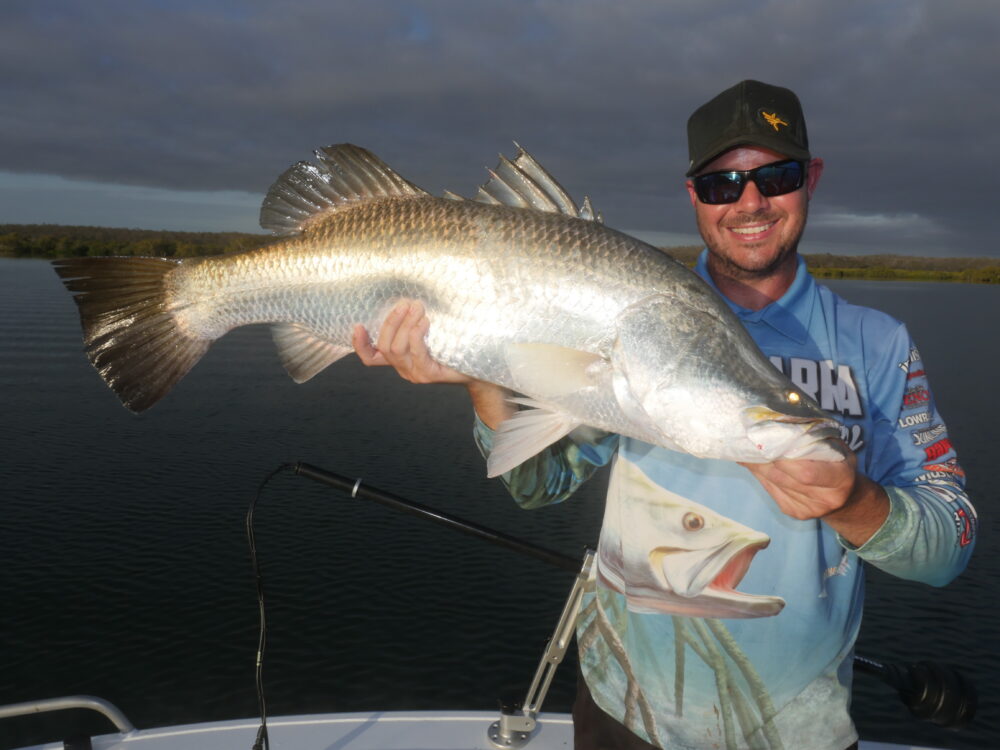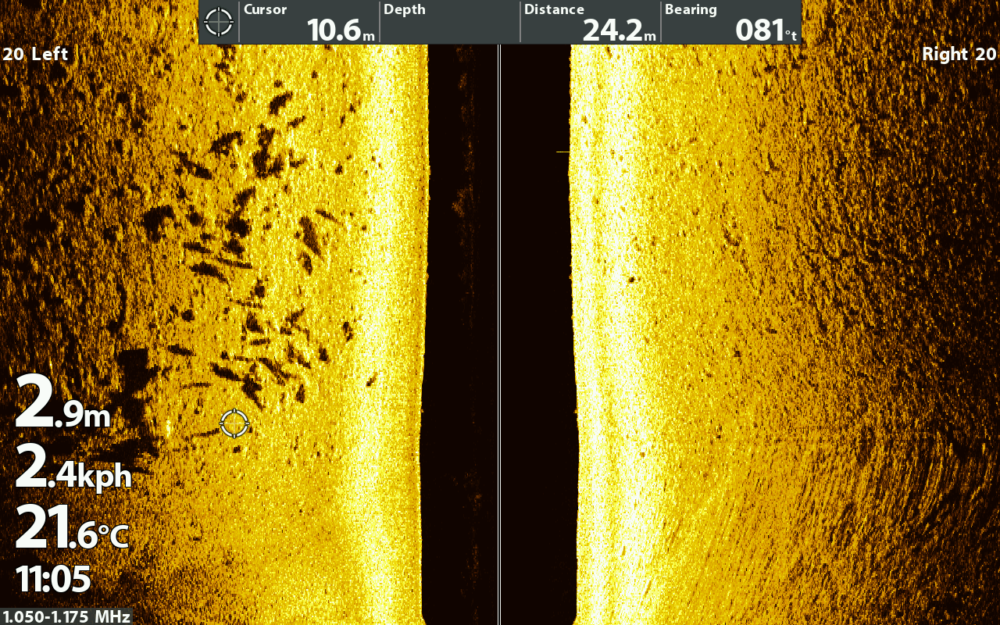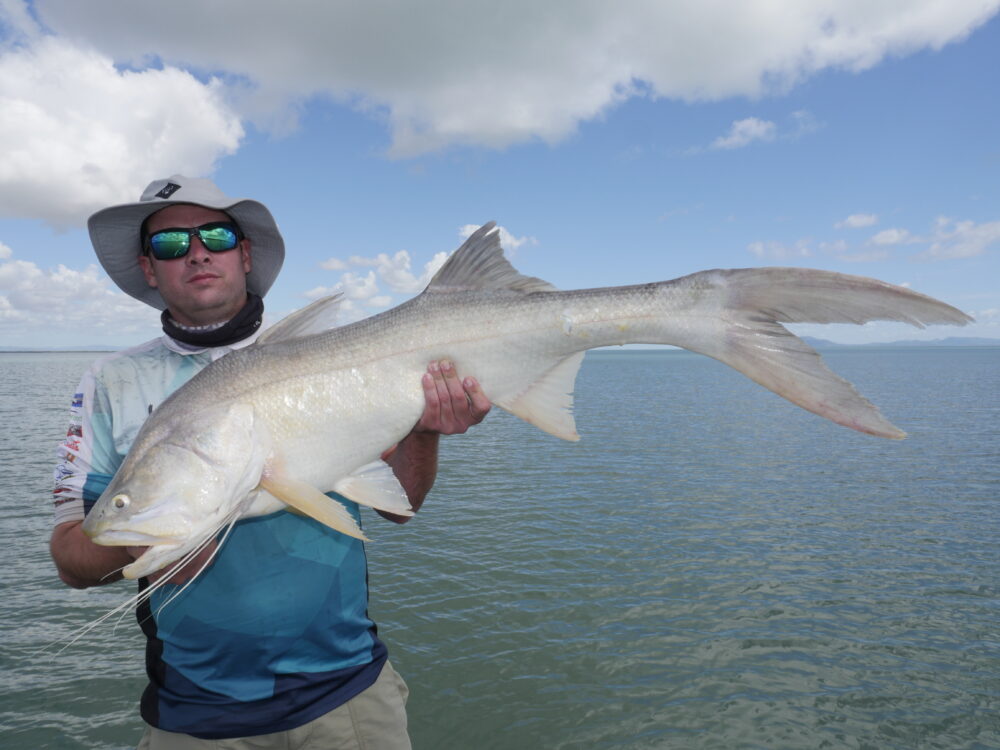A guide to Port Alma – By John Boon
I’ve lost count how many messages I have received with anglers chasing advice on fishing Port Alma. I don’t blame anyone for reaching out trying to get any information on fishing this area. Most people are unaware of how big the entire Port Alma system is. It would be almost impossible to come up here for the first time and do well without some sort of guide or inside help.
I thought it was high time that I sat down and gave out the good oil on how to fish “the Port” with some tips and techniques that should steer you in the direction of piscatorial success.
So where the bloody hell is Port Alma and what exactly is it? Port Alma is situated around 480km north of Brisbane and a short 60km drive from the city of Rockhampton. There is an all tide basic two lane concrete ramp to launch and retrieve your boat with. The Port is also part of the Rockhampton Net Free Zone. Commercial nets were removed back in November 2015.
Port Alma, outside of its fishing potential is known for the small Port facility of loading and unloading of container ships. They do handle explosives at the Port so just be aware if you rock up to the ramp and the police would like to inspect your vehicle and boat then this is why.
On the way to the ramp you will drive past massive big pools of water. These are actually salt evaporator pans. This particular operation supplies salt to the Queensland and national market. When I drive past I always look at the machinery that’s used and wonder what sort of space aged anti-rust protection would be fitted, ha.

February to May would be my recommendation for planning a trip. Make sure to check on rainfall and flooding though.
I do get asked quite a bit about accommodation for parties that are coming up to fish the Port area. There’s plenty of accommodation throughout Rockhampton that have room for boats. A quick search on cabins should bring up enough options.
Two other options that you might not be aware of is the sleepy little town called Bajool at the Port Alma turn off. The pub has rooms available and is a great little watering hole after a big day on the water.
The Alkoomi Adventure Farm stay is another great option situated at Marmor which is only about a five minute drive from the Port turn off.
That’s enough of the basics, let’s get down to where’s your best chances of catching a fish and when. I see a lot of traveling anglers putting no time into planning. Just because it’s a net free zone doesn’t mean the fish will magically appear on your hook. Tidal run can get up to 5-6 meters of variance meaning that the water will run hard. It’s very tough fishing like this with plenty of chocolate coloured water throughout the entire system.
If you plan your trip around the quarter moons there will be less tidal run, cleaner water and a better chance of the fish schooling together to make them easier to cast at.
Port Alma consists of a number of different sub areas. From the ramp heading east you’ve got Balaclava Island, Kameish passage and Connors Creek. If you keep heading east it will give you access to Curtis Island and the creeks on the Island.
Heading south you’ve got three main creeks. The first one is Reidy’s Creek, second is Raglan Creek and the third is Inkermen Creek.
Heading west into the main estuary system is Casuarina Creek with Alligator Creek being a branch off Casuarina.
First of all I would like to cover Balaclava Island or more importantly the creek that runs right through the middle of the Island which is known to locals as Bob’s Creek.
The main structure you will find throughout Bob’s are bank slips, snags, deep holes and drains. You won’t have too much of a problem navigating through here on low tide as long as you stick to the middle. If you head up either of the feeder arms then just take it steady as the further you go, the shallower it gets.
If you’re entering Bobs from the ramp end then searching from the entrance to the first anabranch is well worth putting in the time to scan if you are switched on with side imaging. There are ever shifting snags and slips along here that always hold barra, threadfin, fingermark, grunter and other species. There are plenty of drains along this section as well. We do catch threadies chasing prawns in those shallow drains as well as a few flatties.
Another good section is the bank from the last anabranch back to the sharp left hand bend. This is another area similar to the last one described. If you can find a fresh bank slip the barra won’t be too far away.
Kamiesh Passage separates Balaclava Island from the main land. This would have to be a drain fishermen’s dream. Shallow drains run down each side of the bank all the way to the Conners intersection. You can either work the drains by blind casting, fishing things like soup lines or use your side imaging to locate the drains holding fish. This is mainly a barra and king threadfin area but you just never know what might be feeding out the front of one of those shallow drains.
Conners Creek would have to be one of the most reliable areas for fingermark and grunter. If you talk to any of the locals about Conners Creek they will generally tell you about the main rock bar. It’s a massive rock bar that stretches about two thirds of the way across the creek.
There is a maze of bommies and channels running through this area. If it’s your first time fishing this area I would flick out a couple of lures and have a troll around the rock bar. This will give you a good look at how much area it covers. Watch your sounder as you go and look for fish and bait sitting on top of the bommies. You can then either concentrate your efforts with either soft plastics, soft vibes or some live baits.
Next we will head south from the boat ramp into the Reidy’s, Raglan, Inkermen creek area. Reidy’s being a smaller creek is shallower then the other two and doesn’t cop anywhere near as much run so it’s generally the first creek that the water clarity improves in.
The other two creeks I would say need smaller tides to fish well. You will understand if you ever venture up one of them for a look. The sides of the creeks are fairly steep and they drop into deep water very quickly. They would be among the last areas of Port Alma for the water clarity to improve.
How I fish these creeks is fairly simple. Most of the major bends will create bank slips and snags so you can either cast them blind, looking at things like bait presence or scanning them to determine fish numbers. If fish numbers are found it can be just a matter of putting in the hard yards to figure out bite times.
Reidy’s Creek has a few good gravel and rock bars up towards the back of the creek. If you jump on Google Earth you can have a good search throughout the system and get the GPS locations of each rock bar.
While you’re on Google Earth make sure you have a look up the back of Inkermen Creek. You will find a couple of exciting man-made structures that you will pull good fish off. The first is the Pump Station and the surrounding gravel areas. The second is a pipe bridge that runs right across the creek. I’ve seen and been smoked by the large barra that live in between the pylons.
If you head north from the Port ramp and then swing west you will now be running into Casuarina Creek. It’s a big wide system so just be careful when the wind gets up as it can get very choppy.
You will get to the only real major creek that comes off Casuarina down at the first bend which is Alligator. In this creek there are gravel bars towards the middle which hold good numbers of fingermark and grunter. Plenty of sharp bends which have good slips and snags on them but they are ever changing so what was there last trip might not be there on the next trip.
Another great option in this creek is to check out the smaller feeder creeks that come off the main system. Big king threadfin love to hang out at the mouths of feeder creeks and I’ve caught plenty of meter plus King in Alligator.
If you keep travelling up Casuarina Creek you will get to a place known to locals as “the cut through”. The water did at one stage travel up and around the loop but erosion enabled the water to break through which is how it is today.
This place just screams fish. There are many current lines and deep holes that have large numbers of barra and King threadfin in them. There have been some horse black jew caught in this area as well.
There’s some more man-made structure in the form of another pump station and plenty of gravel around it to target some XOS grunter. It’s another reliable spot to target big King threadfin as well.
If you’re going to go to the trouble of booking a trip to Port Alma then what sort of gear should you bring with you? I believe you should rig up four rods to cover all bases. Run a light gear setup, say 3-6kg spin rod with a 2500 sized reel, 15 lb braid and 30-40lb fluorocarbon leader. The next two would be a medium and heavier setup for dealing with barra and large threadies. 6-8 kg spin rod with a 4000 sized reel, 20-30lb braid and 60lb fluorocarbon leader. Third a 6-10kg rod, 5000 sized reel, 30lb braid and 80lb fluorocarbon leader. For the final setup I would run a medium sized baitcast setup for hardbodies and maybe some vertical jigging. Those setups would cover most species and everything from two inch plastics right up to 7-8 inch paddletails.
What would be some of the must have lures for the trip? I definitely wouldn’t leave home without a tackle tray full of soft vibes in particular the Zerek Fish traps. Grab some small medium and large but also vary your colours. My favourites would be flying bear and min min but having a good selection of contrast is a great idea.
For soft plastic prawn imitations it would be hard to go past a Berkley Gulp Shrimp in 2,3 and 4 inch. They don’t look like much but they work a treat. I’ve caught just about every estuary species on them including big King threadfin over 140cm. When the threadies are acting really stubborn then try the two inch, especially if they’re feeding in drains.
If there’s one particular plastic that has a thousand different options it would be the paddle tail. So many variations all with their very own unique characteristics. If you want a good paddle tail for barra then the 7 inch Castaic would be my number one choice. I believe they have got one of the best body rolls and tail thumps on the market.
My second choice would be the Zerek Flat Shad range. They come pre rigged with a strong weedless hook so you can bury them in the snags if you want straight out of the packet. You can also take the weedless hook out and run a standard jig head if you want more hook exposure.
Well, there you guys have it. Places to search and a list of lures you can put in your tray and start catching fish. If you can bring a good quality side imaging sounder and a good idea of how to use it you will do better than at least 50 percent of the other visitors.
Make sure you do your research on top of what this article is telling you. I don’t think you can ever be over prepared when fishing a new location. Just remember that closed barramundi season runs from the 1st of November to the 1st of February. If you make the trip up during the closure then concentrate your efforts on King threadfin and fingermark. If you do catch a fish when you’re up here send it into editor Anthony for Fish and Boat readers pics, I’m sure he and the rest of us would love to see them.









